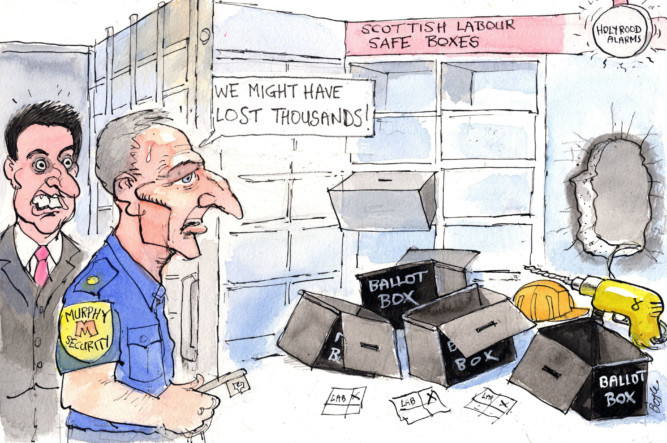
For some it is a piece of driftwood to desperately cling on to in stormy electoral waters.
But can the “incumbency factor” actually save dozens of MPs who the pollsters have already consigned to the scrapheap?
The personal vote for any politician is treasured by all parties, but is notoriously hard to track.
Your recycling bin may already be in receipt of a leaflet from your most recent MP with claims about what they or their party has achieved in the last five years but even the genuinely hard working constituency MPs are not immune from the national trend.
In Scotland, polling funded by Tory peer Lord Ashcroft suggests the SNP will dominate the 59 parliamentary seats but crucially the survey asked about party voting intentions without naming the candidates. This, according to Lib Dem and Labour strategists, is where they have a chance in turning the tide.
Ultra-local campaigns which major on what the incumbent MP has done about potholes or school closures in an area for example is what will play out in the final weeks of the General Election.
Capitalising on the unknown factor of some of their rivals is key according to the Lib Dems.
A poll of 400 people in West Aberdeenshire and Kincardine conducted by Survation, admittedly using a methodology specified by the Lib Dems, makes interesting reading.
The incumbent, Sir Robert Smith, scored favourable ratings of 35%, while his SNP opponent, Stu Donaldson, racked up just 3.5%.
One in five respondents did not know who Sir Robert was, compared to 80% not knowing who Stu Donaldson is.
It is a crude exercise in many ways and interestingly the Lib Dems didn’t share the results from Inverness where Danny Alexander is up against well-known SNP council leader Drew Hendry.
Nationalist insiders rightly point out the sheer scale of the projected swing to them from Labour and the Lib Dems will swamp the incumbency factor. And indeed some of the biggest swings to the SNP in the Ashcroft polls are in Labour seats where the party has the biggest majorities.
The incumbency life raft may save some come May 7 but it will have no room for any passengers.

Enjoy the convenience of having The Sunday Post delivered as a digital ePaper straight to your smartphone, tablet or computer.
Subscribe for only £5.49 a month and enjoy all the benefits of the printed paper as a digital replica.
Subscribe